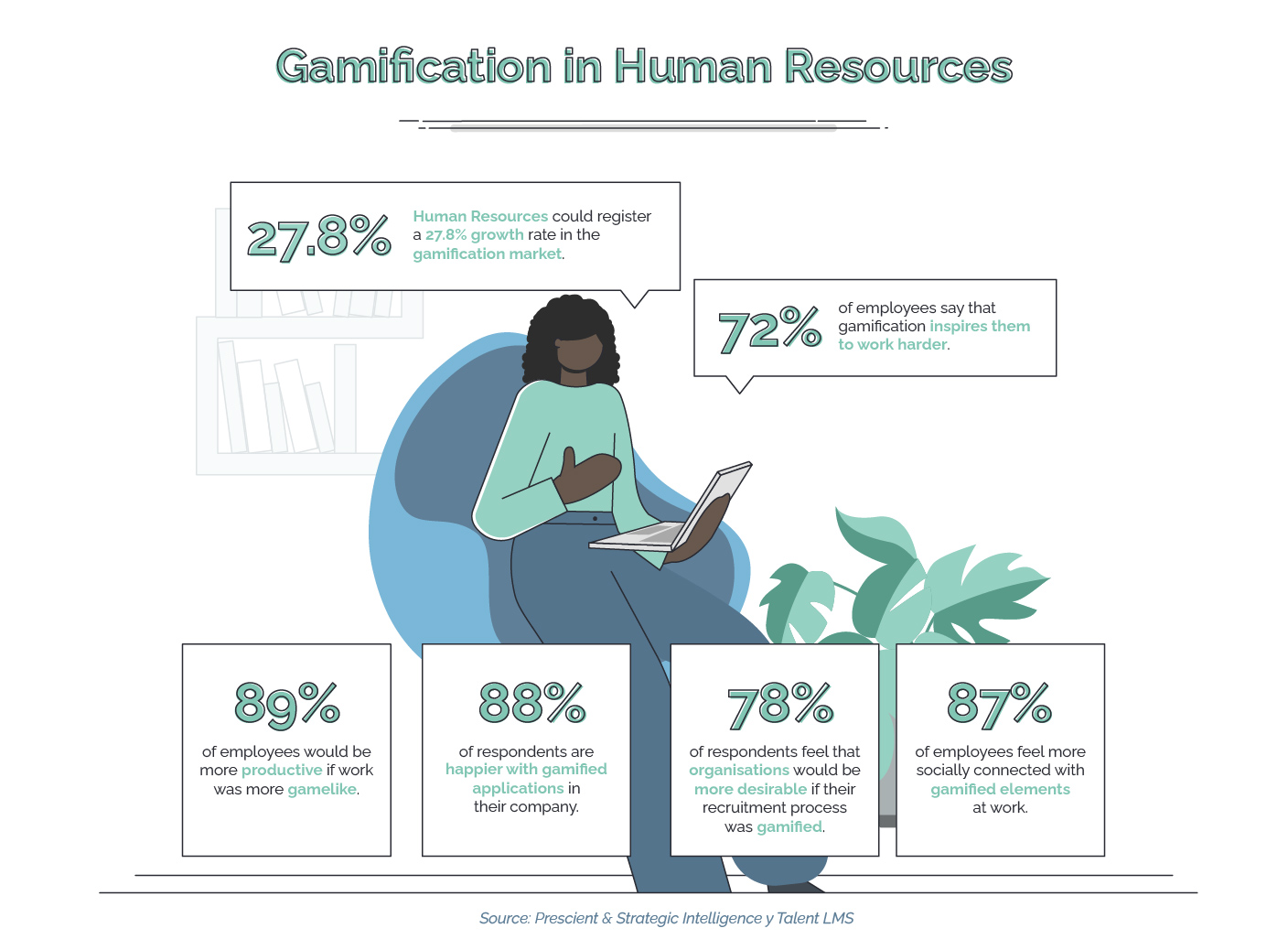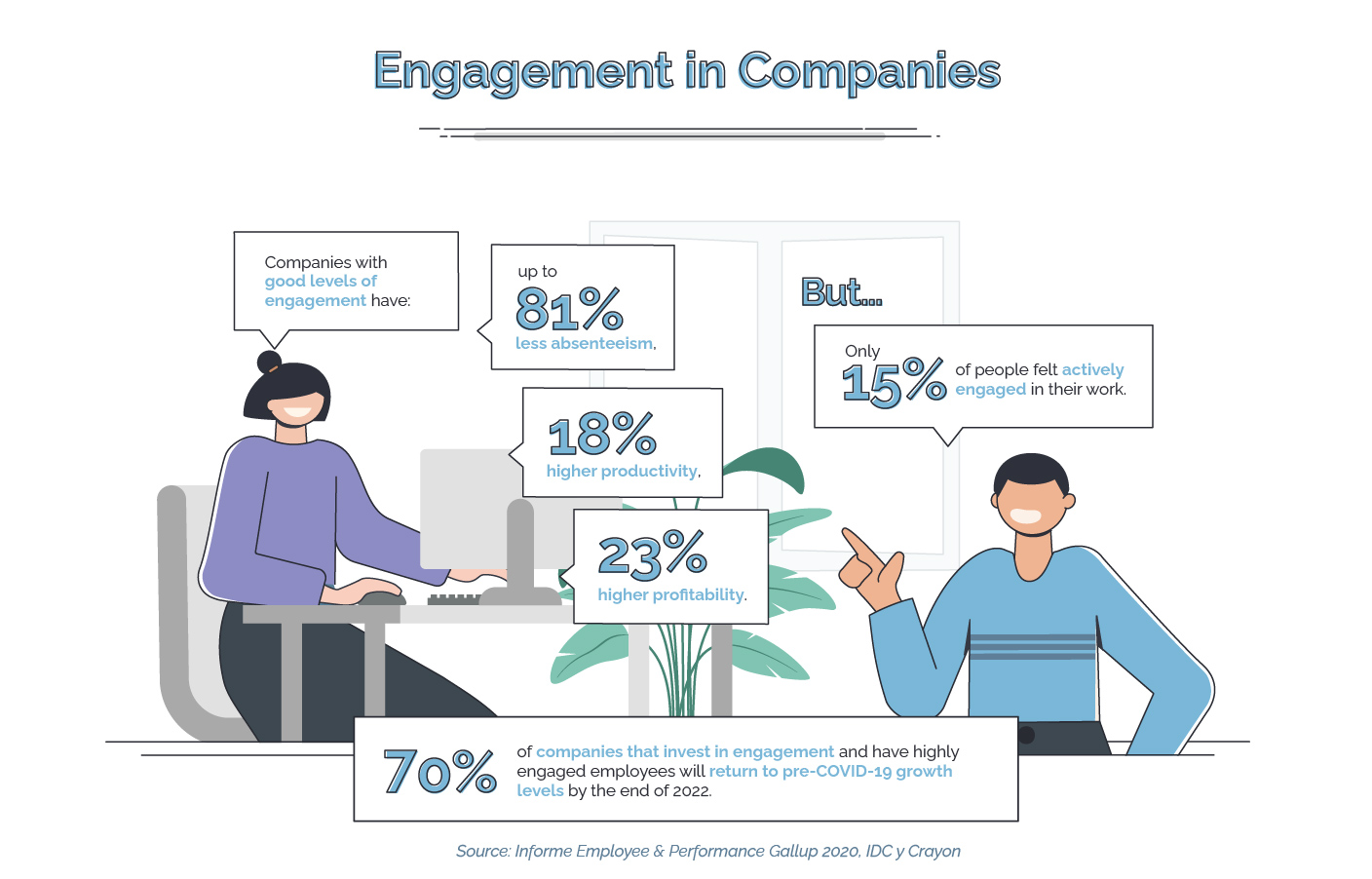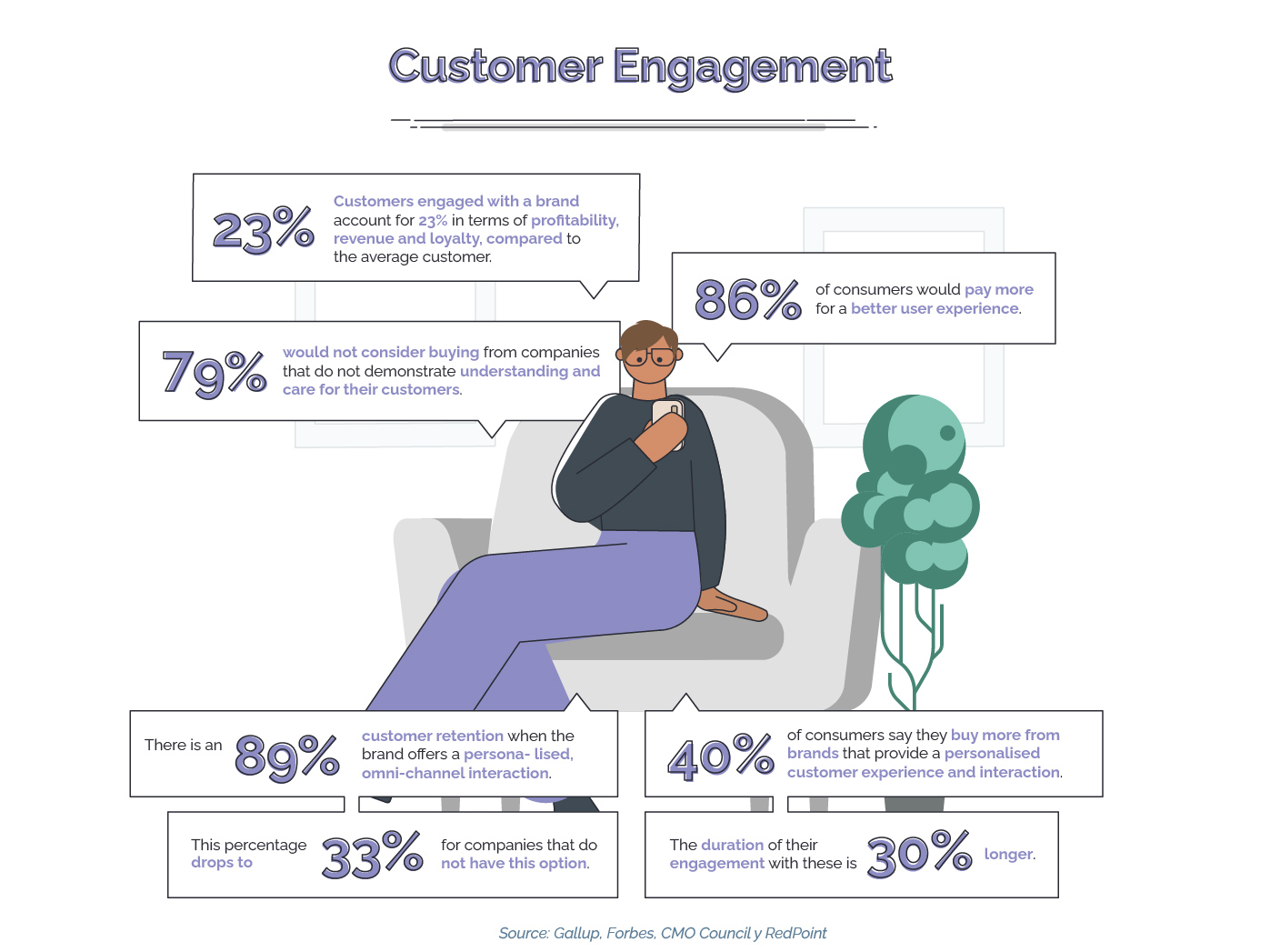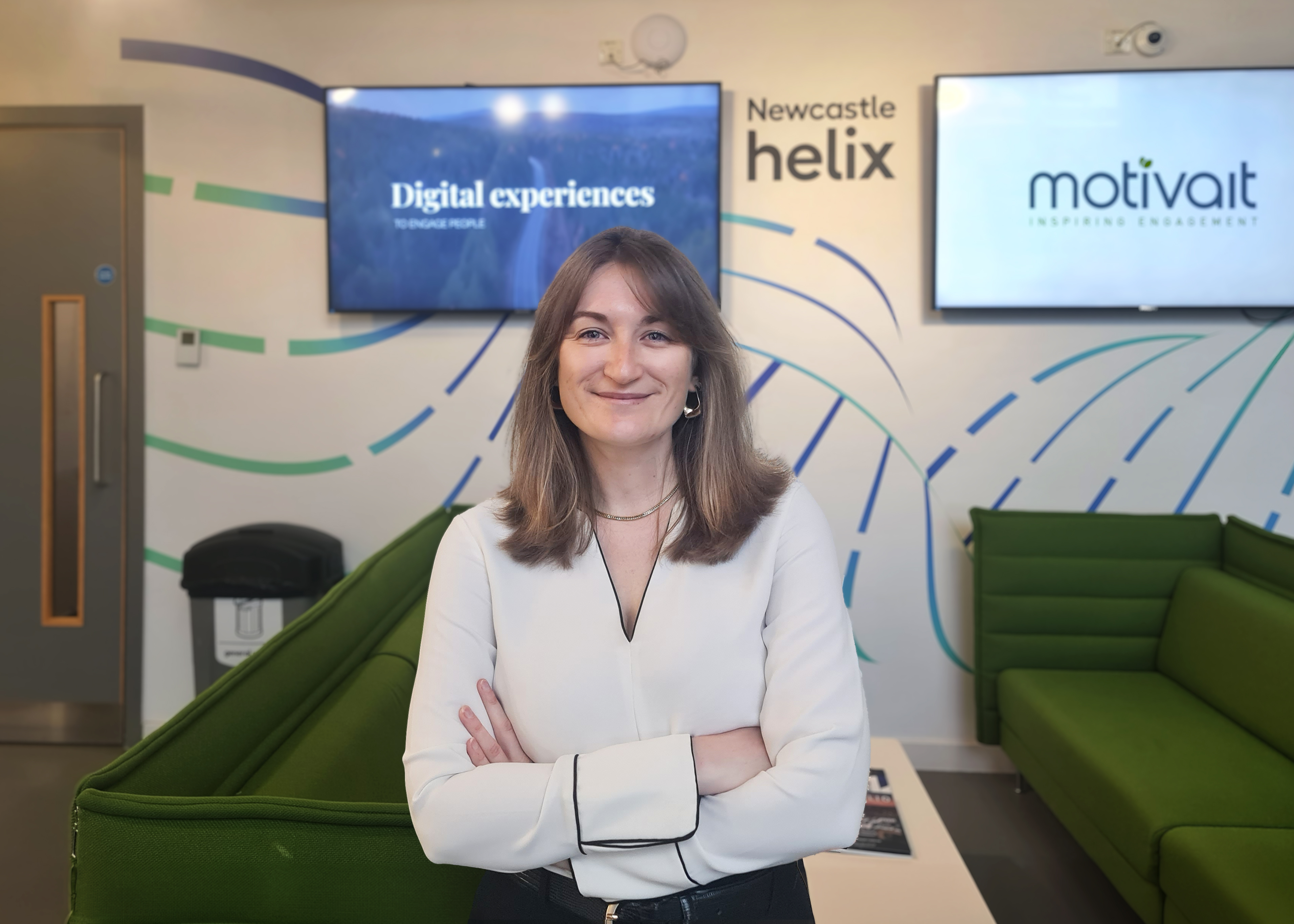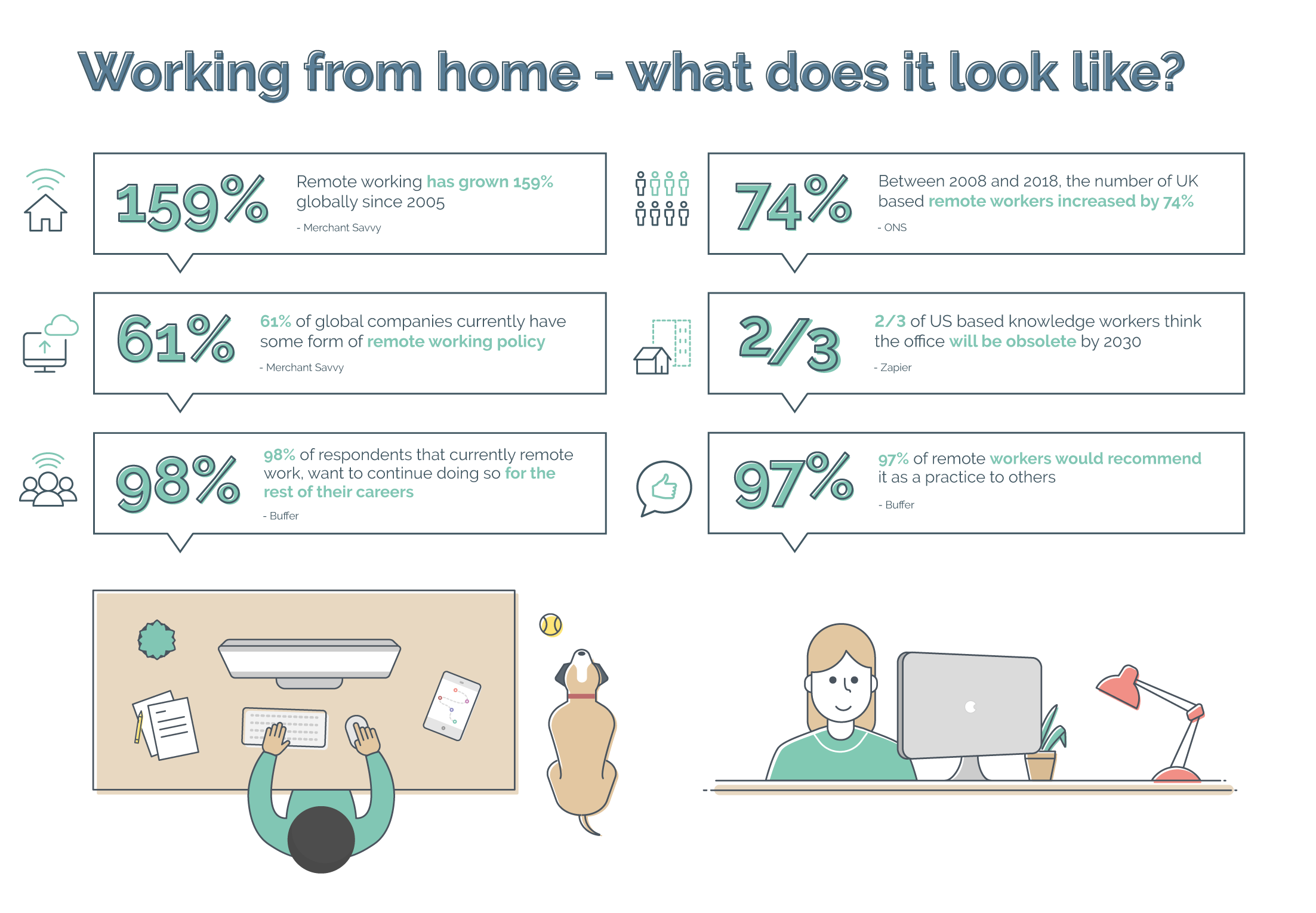Although at first glance they may appear to be very different departments, the reality is that marketing and HR share many similarities. Broadly speaking, both seek to attract, retain and satisfy the needs of their ‘customers’, whether they are consumers or employees; both want to deliver rewarding experiences and expect a return on their relationship; both need to know their audiences and their expectations, fears or desires; and in both, communication, recognition, motivation and reward for loyalty are essential to retain them.
If we analyse the changes experienced in society in recent years, the power is no longer with organisations but with the individual. The traditional approach of imposing and controlling is giving way to greater collaboration and consensus. Recommendations have become the norm when it comes to influencing purchasing, and technology has turned around the way we relate to our environment, where immediacy is a requirement, and we need to have access to information at the click of a button.
Faced with this qualitative leap in social behaviour, companies have been adapting and implementing strategies that provide the greatest satisfaction to their customers following a new approach. The key now is to design unique experiences that generate engagement beyond what is offered by the usual loyalty programmes. This means appealing to emotions, personalising each activity, entertaining, surprising and managing a stable, lasting and deep relationship. Can the same recipe be applied to those ‘customers’ of HR – the employees? And can the technology used by marketing be a good solution to solve the important challenges in HR?
Adapting to changes in concept
Customer acquisition and retention often receive a significant share of the marketing budget. They are in many ways similar to recruitment, selection, onboarding and career development, but different in terms of the budget allocated for these purposes. But who chooses who nowadays? Does the organisation select the candidate or does the candidate select the company they wish to work for? HR managers know that if they want to attract the best talent, they have to “sell” the company and the vacant position well and convince them that they are the best choice. Just as a marketing expert who wants to compete and grow in the market would do with their products.
However, both consumers and employees now have a different set of values, and want to live unique experiences, to feel listened to and understood, to be the protagonists and receive personalised treatment. They want to be able to interact with brands or companies that reflect their ethical or sustainable values. They want to be informed and be involved in events and exchange ideas. They are competitive yet want to share. These are all aspects that enhance their sense of belonging. Each of these factors are becoming more important to customers, but how do you order all these concepts to be able to manage new engagement strategies?
Innovation to improve performance and stimulate participation
Technology is a catalyst for development, as it provides a space to bring together all the needs, problems, corresponding solutions and a way to build an ideal environment to achieve objectives. By following the employee journey from start to finish, we can detect where our potential gaps are and how to turn these into successful outcomes. When dealing with the recruitment and selection phase, technology can help us learn about and qualify key elements of applicant profiles, while at the same time providing them with information about the company’s values, ethos and philosophy to check the alignment between the two. It helps us to be more effective and convey an enviable brand image. As the journey continues, it is time to impress our applicants, to create an unforgettable impression that will make them lifelong ambassadors for the company. It is time to create an onboarding experience in which we can make such a necessary and essential process cost-effective, entertaining and efficient, to unclutter those countless procedures, policies and other documents that everyone needs to be familiar with, or to make job-specific training entertaining and motivating.
Professional development, training plans and job recognition complete the employee’s journey, which technology organises and promotes through gamified engagement solutions. Users greatly appreciate these tools because they allow them to achieve goals in a fun way, interact with other colleagues, progress, compete, learn faster, embed certain behaviours and, above all, motivate and generate a bond with the company that is difficult to break. At the current time, HR is expected to register the highest growth rate in the gamification market, with a 27.8% increase according to data provided by Prescient & Strategic Intelligence. In addition, 72% of employees say that gamification inspires them to work harder. Additionally, according to Talent LMS, 89% of employees think they would be more productive if work was more gamelike and 88% of the survey respondents affirmed that gamification makes them happier in their company. For 78% of respondents, organisations would be more desirable if their recruitment process was gamified and gamification elements at work make 87% of employees feel more socially connected.
Investing in employees to win customer’s hearts and minds
Human Resources must therefore innovate and implement actions that boost interest and motivation in order to nurture a sense of commitment in employees. We must not forget that investing in HR is investing in our customers and their satisfaction. Engaged employees transmit confidence and enthusiasm, they work harder for the benefit of the company and generate customer loyalty.
For marketers and HR professionals alike, one of their main purposes are to activate the mechanisms necessary to create engagement. The Employee and Performance Gallup 2020 report states that companies with high levels of engagement have up to 81% lower absenteeism, 18% higher productivity and 23% higher profitability. However, only 15% of people felt actively engaged in their work. Disengaged employees are more likely to waste time and be absent more and therefore be less productive and contribute to a worse environment. It is worth noting the conclusion of the study ‘The Top 5 Traits of a Successful Work Culture’. Employee engagement in the connected workplace’, prepared by IDC and Crayon which confirms that employee engagement has become a fundamental factor in the recovery and resilience of organisations and a clear indicator of their health. In this sense, it affirms that 70% of companies that invest in engagement and have highly engaged employees will recover pre-COVID-19 growth levels by the end of 2022, further reinforcing the notion that investing in employee engagement means an investment in the company’s future.
Additionally, Gallup also reports that customers who are fully engaged with a brand account for 23% of profitability, revenue and loyalty, compared to the average customer. ThinkJar states that 86% of consumers would pay more for a better user experience. In this regard, a study by the CMO Council and RedPoint reveals that personalised, omni-channel interaction with customers offers companies an average customer retention rate of 89%, which drops to 33% for companies that do not have this option. In addition, 40% of consumers recognise that they buy more from brands that provide a more personal customer experience and interaction and what is more, the duration of their engagement with these brands is 30% longer. Finally, 79% do not consider buying from companies that do not actively demonstrate that they understand and care for their customers.
This data clearly demonstrates a trend that is similar in both HR and marketing department, two areas of an organisation in which marketing activity is fundamental in the face of changes in society and people’s behaviour. Both areas are destined to understand each other through better engagement.


